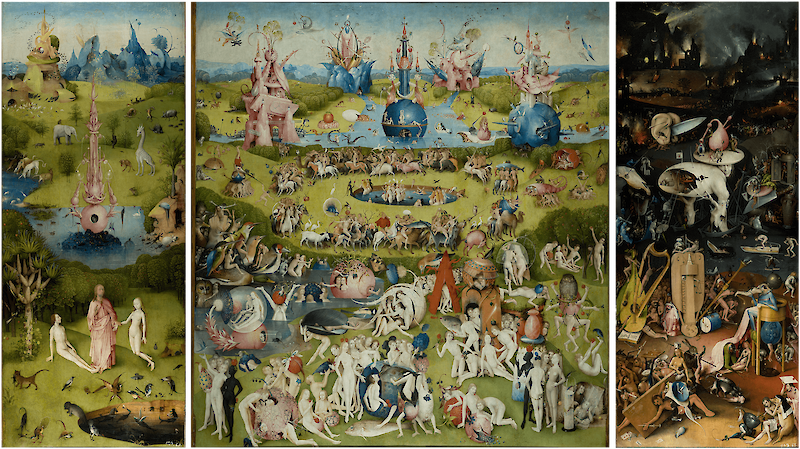


The altarpiece triptych was an old idea by the time that Heironymus Bosch got ahold of it. Three painted panels in an elaborate frame, often telling a story from right to left. Giotto’s Stefaneschi Triptych for St. Peter’s cathedral is a good example of the form—Christ, serene, surrounded by adoring disciples. But Bosch had a different story to tell. The Garden of Earthly Delights is a folding triptych, the left and right panels fold inwards, and when closed it the outside of the panels display a meditative image of the world during its creation, painted in the gray-green grisaille common to Netherlandish triptychs of the time. A moment of solemnity before revealing the leaping madness inside.
The Garden of Earthly Delights needs little introduction. It’s one of the most famous, or infamous artworks in history, and for good reason. Opening the triptych reveals three panels, on the left, the Garden of Eden, in the center, the titular Garden of Delight, and on the left, Hell. Each panel vibrates with activity. Dozens of tiny figures indulge in every possible vice, perversion and torture. It’s remarkable. It’s a tour-de-force. An incredibly imaginative depiction of sin and its extraordinary punishments. Take a look, zoom in, explore.
The Garden of Earthly Delights was so successful in its time that it spawned imitations by numerious artists, and today its influence can be felt in the work of artists like H.R. Geiger. Bosch worked in a time of extreme religious piety, and but found a uniquely exciting way to express it, creating a vivid caution against depravity that also gave his viewers a twisted peek into their darkest fantasies.
...
Got questions, comments or corrections about The Garden of Earthly Delights? Join the conversation in our Discord, and if you enjoy content like this, consider becoming a member for exclusive essays, downloadables, and discounts in the Obelisk Store.

